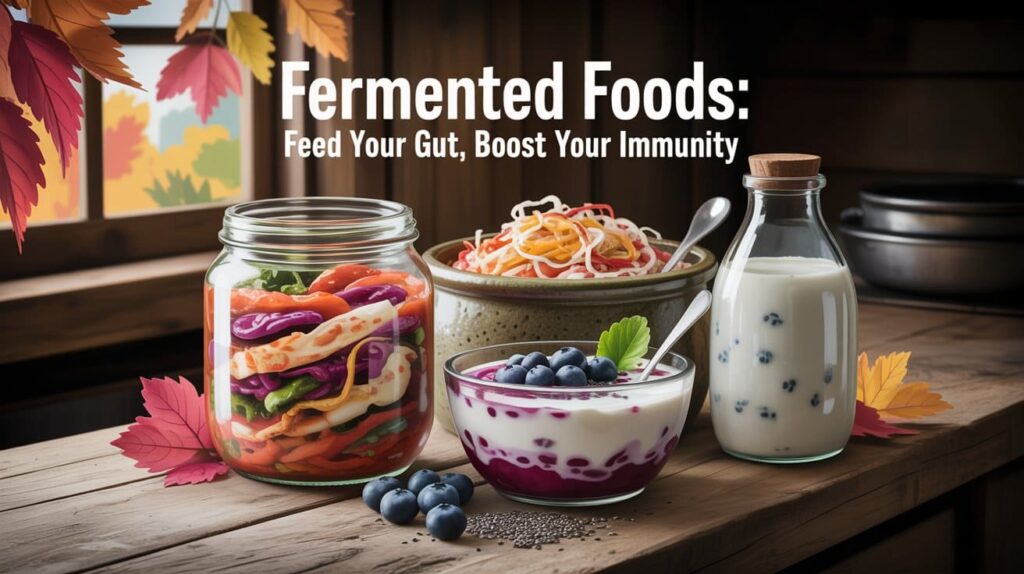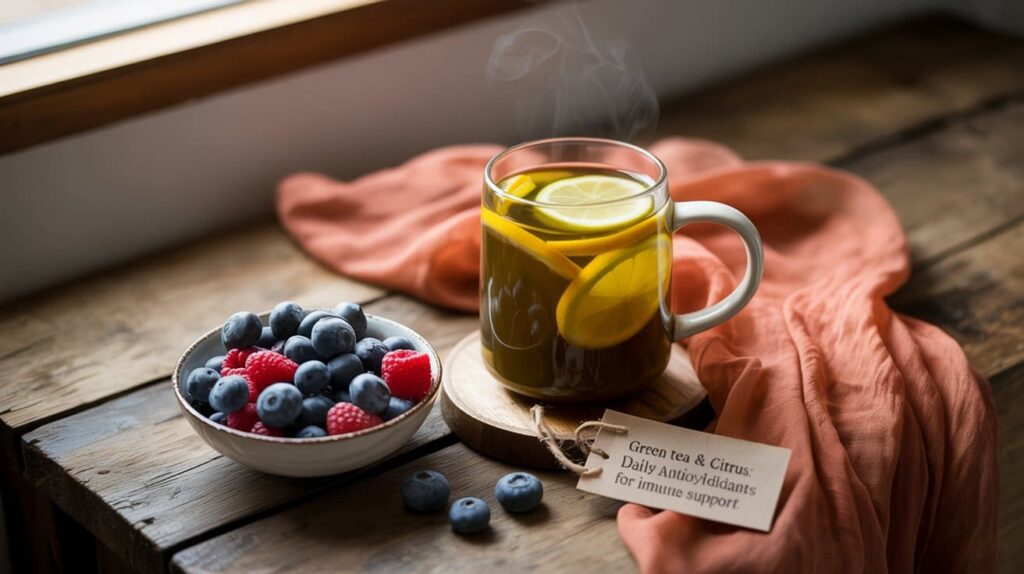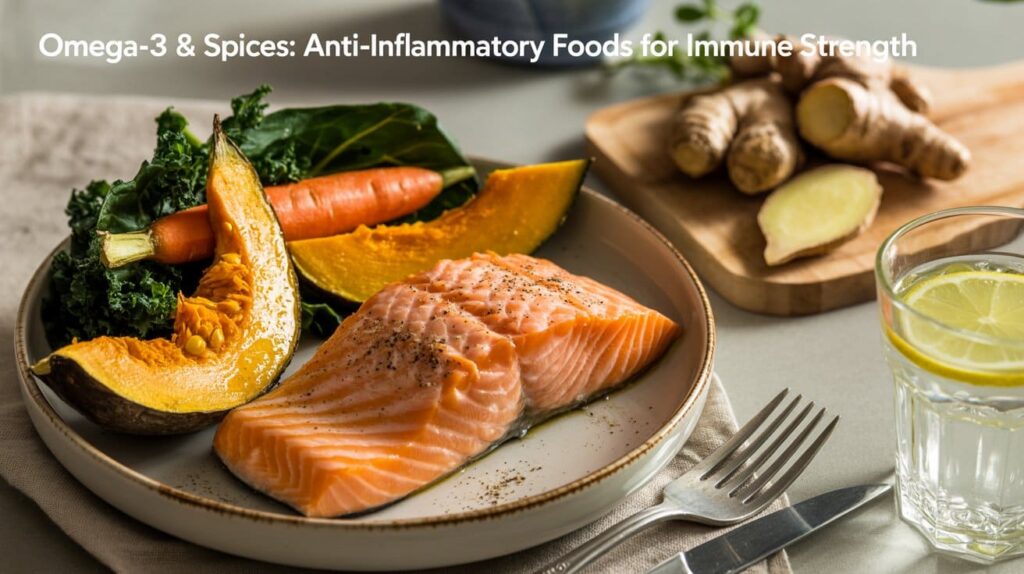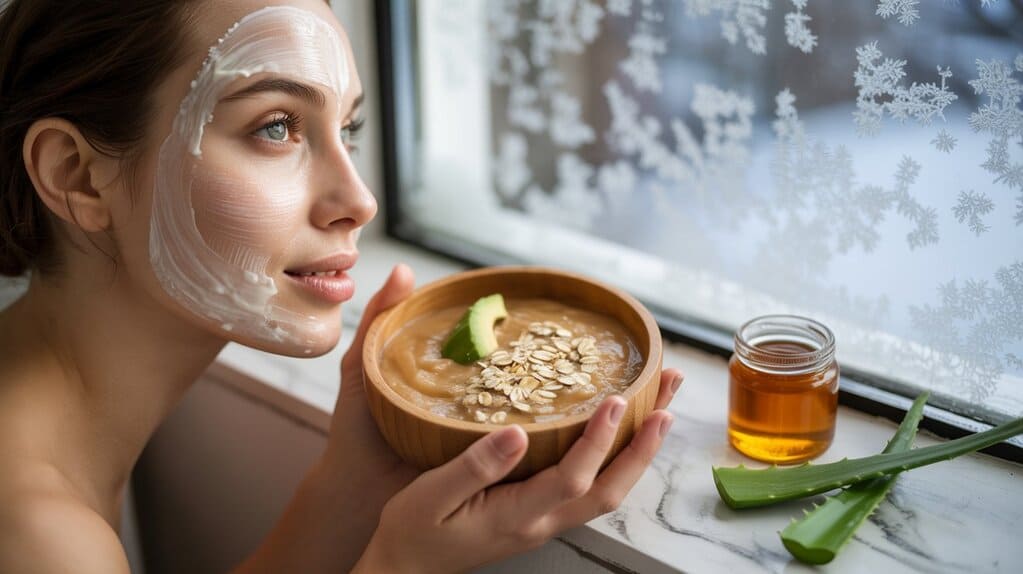
Introduction
As daylight shortens and temperatures dip in early fall, our bodies transition from the languid rhythms of summer to cooler, busier days—and with that shift comes a predictable rise in respiratory infections. Nourishing your immune system now can help you stay resilient through the season. In this science-backed guide, you’ll find the best fall superfoods to fortify innate and adaptive immunity, with key points, tables/figures, bolded SEO keywords, and citations from recent medical studies and reputable sources, including Wikipedia and peer-reviewed journals. We’ll also highlight insights from prominent researchers across Asia, America, and Europe—so you can make practical, confident choices at the market and in your kitchen.
Key Points
- Fermented foods (e.g., kimchi, yogurt, kefir, sauerkraut) can increase gut microbial diversity and lower inflammatory markers, supporting immune balance. PubMedCell
- Mushrooms (shiitake, maitake, reishi) provide β-glucans that modulate innate immunity; preliminary and clinical evidence shows immune benefits, though results vary by type and dose. WikipediaPMCSpringerLink
- Green tea (EGCG) offers antioxidant and antiviral activity in vitro; clinical relevance is mixed, so treat it as a supportive—not standalone—strategy. PMC+1ScienceDirect
- Citrus & berries provide vitamin C and polyphenols; vitamin C does not prevent most colds but may modestly reduce severity/duration. National Bioinfo CentrePMC
- Garlic delivers allicin and other organosulfur compounds with antimicrobial potential; evidence for cold prevention is limited, but mechanistic and review data are promising. PMCRSC Publishing
- Omega-3 rich fish (sardines, salmon, mackerel) modulate inflammatory pathways and may aid immune regulation, though prevention of common respiratory infections is not guaranteed. ScienceDirectMDPIBMJ
- Ginger & turmeric (curcumin) show anti-inflammatory and immunomodulatory effects in human and preclinical studies; useful as culinary staples with cautious supplementation. FrontiersMDPIHealth

جسم
1) Fermented Foods: Kimchi, Yogurt, Kefir & Sauerkraut
Why they’re fall all-stars: As outdoor time wanes and indoor crowding increases, your gut microbiome becomes even more pivotal to immune readiness. Fermented foods supply probiotics and postbiotics that can train immune cells and reduce chronic, low-grade inflammation.
- Clinical evidence: A Stanford randomized dietary intervention (10 weeks) led by Dr. Christopher Gardner with collaborators Drs. Justin & Erica Sonnenburg showed that a fermented-food-rich diet (kimchi, kefir, yogurt, kombucha, fermented veggies) increased microbiome diversity and decreased ~20 inflammatory markers in healthy adults. PubMedCellStanford Medicine
- Kimchi focus (Asia): A 2023 scoping review found kimchi interventions may benefit general health and GI function; earlier human work suggested immunomodulatory effects in healthy students. While more robust trials are needed, kimchi remains a nutrient-dense, low-calorie source of vitamins and fiber. BioMed CentralPMCWikipedia
- Probiotic dairy & URTIs: Meta-analyses and recent RCTs suggest probiotic yogurt can reduce the incidence or duration of upper respiratory tract infections, particularly in children and older adults; strain and dose matter (e.g., Lactobacillus rhamnosus GG, multi-strain blends). BioMed CentralPMCMDPI
How to use: Aim for 1–3 servings/day of mixed fermented foods (rotate kimchi/sauerkraut, yogurt/kefir, kombucha). Choose live-culture products (look for “contains live and active cultures”). For heat-sensitive probiotics, add fermented vegetables at the end of cooking.

2) Mushrooms (Shiitake, Maitake, Reishi): β-Glucan Powerhouses
Mushrooms supply β-glucans—soluble fibers that engage pattern recognition receptors (like Dectin-1) on innate immune cells (macrophages, dendritic cells), potentially enhancing surveillance while tempering excessive inflammation.
- Evidence & nuance: Reviews and preclinical work support immunomodulatory actions of fungal β-glucans, although human trial results vary by species, molecular weight, and extraction method. A 2025 pharmacology review details anti-inflammatory and immune-pathway effects (e.g., NF-κB, PD-L1 modulation) relevant to host defense. PMCSpringerLink
- Background (popular reference): Wikipedia summarizes β-glucan sources (yeast, oats, barley, mushrooms) and their emerging immune roles. Wikipedia
How to use: Include 1 cup cooked mushrooms 3–5 days/week. For supplements, look for fruiting-body extracts, standardized β-glucan content, and independent testing; discuss with your clinician, especially if immunocompromised.

3) Green Tea (EGCG): Antioxidant & Antiviral Support
Green tea offers catechins—especially EGCG—with antioxidant effects and observed antiviral activity in lab models.
- Asia-led virology: Japanese in-vitro studies show green tea beverages and catechins inhibit SARS-CoV-2 infectivity in a dilution-dependent manner. European experiments also report strong neutralizing activity of standardized green tea extracts. Clinical translation is not established, and animal models are mixed. PMC+1ScienceDirect
- Popular science context: EGCG’s broader research background, safety notes, and metabolic findings are summarized on Wikipedia. Wikipedia
How to use: Sip 2–3 cups/day of brewed green tea. Avoid high-dose catechin supplements unless advised by a clinician, as some concentrated products have safety considerations.

4) الحمضيات والكيوي والتوت: فيتامين سي + البوليفينول
Vitamin C supports epithelial barriers and leukocyte function. However, expectations should be realistic:
- What the evidence says: Large reviews show routine vitamin C doesn’t prevent colds for most people, but may slightly shorten duration and reduce severity—useful during fall’s first sniffles. National Bioinfo CentrePMC
How to use: Eat 1–2 vitamin-C-rich fruits daily (e.g., orange, kiwi, strawberries) and add bell peppers or broccoli to meals.
5) Garlic: Allicin-Rich Culinary Medicine
Garlic contains allicin, ajoene, and sulfur compounds with antimicrobial and immunomodulatory potential.
- Evidence landscape: A Cochrane review found insufficient clinical trial evidence overall (one small RCT suggested fewer colds), but mechanistic and review articles describe plausible antiviral and anti-inflammatory actions—including in COVID-19 models. Consider garlic a supportive food, not a cure. PMCRSC Publishing
How to use: Crush/chop fresh garlic and let it rest 10 minutes before cooking (maximizes allicin). Aim for 1–2 cloves/day in meals, as tolerated.

6) Omega-3–Rich Fish: Sardines, Salmon, Mackerel
EPA and DHA tune immune responses via resolvins and protectins, mediating the resolution of inflammation.
- What’s solid: Umbrella and systematic reviews indicate omega-3s can lower inflammatory markers (CRP, TNF-α, IL-6) across conditions, and may attenuate postoperative inflammatory responses; not all trials show infection-prevention benefits (e.g., cod liver oil RCT negative for URTIs/COVID outcomes). ScienceDirectMDPIBMJ
How to use: Eat 2–3 servings/week of fatty fish. If using supplements, choose third-party tested products and consult your clinician—especially if you take anticoagulants.
7) Ginger & Turmeric: Kitchen Staples with Immune-Modulating Potential
Ginger (Zingiber officinale) and turmeric (Curcuma longa) contribute polyphenols (e.g., gingerols, shogaols, curcumin) that down-regulate NF-κB and reduce pro-inflammatory cytokines.
- Human & mechanistic data: Reviews and clinical studies report anti-inflammatory and immunomodulatory effects of ginger; curcumin’s anti-inflammatory potential is widely studied. Practical tips for bioavailability (pairing curcumin with black pepper or fats) are echoed in consumer-health guidance. Note: quality and dosing vary; treat supplements cautiously. FrontiersMDPIHealth
- Safety & adulteration: Turmeric powders have occasionally been adulterated with industrial dyes or lead chromate; buy from reputable brands. Wikipedia
How to use: Grate fresh ginger into teas/stir-fries; add turmeric to soups, eggs, and stews with a pinch of black pepper. Typical culinary intakes are safe; discuss supplement doses with a professional.
Practical Figure: Your Early-Fall Immune Plate
| Superfood | Key Immune Nutrients/Compounds | Suggested Serving | Evidence Snapshot | Notes |
|---|---|---|---|---|
| Fermented foods (kimchi, yogurt, kefir, sauerkraut) | Probiotics, postbiotics | 1–3 servings/day | ↑ Microbiome diversity & ↓ inflammatory markers in an RCT; some URTI reduction with probiotic yogurt | Choose live cultures; vary sources. PubMedCellBioMed Central |
| Mushrooms (shiitake/maitake/reishi) | β-glucans | 1 cup cooked, 3–5×/week | Immunomodulatory effects; outcomes depend on species/extract | Prefer fruiting-body extracts if supplementing. PMC |
| Green tea | EGCG & catechins | 2–3 cups/day | In-vitro antiviral activity; animal data mixed | Favor brewed tea over high-dose pills. PMC+1 |
| Citrus/kiwi/berries | Vitamin C, polyphenols | 1–2 fruits/day | Small reduction in cold severity/duration | Whole foods > pills for most people. PMC |
| Garlic | Allicin, sulfur compounds | 1–2 cloves/day | Limited RCT evidence; plausible mechanisms | Rest chopped garlic 10 min before heating. PMC |
| Fatty fish (sardines/salmon) | EPA/DHA | 2–3 servings/week | ↓ CRP/TNF-α/IL-6 in meta-analyses; mixed infection data | Consider tested supplements if diet is low in fish. ScienceDirect |
| Ginger & turmeric | Gingerols/shogaols, curcumin | Daily culinary use | Human & mechanistic anti-inflammatory data | Combine turmeric with black pepper/fat. Frontiers |
How to Build an Early-Fall Immune Routine (SEO-friendly steps)
- Anchor your plate in whole foods. Prioritize fermented vegetables, plain yogurt/kefir, mushrooms, citrus, berries, leafy greens, and omega-3 fish.
- Diversify your ferments. Rotate kimchi, sauerkraut, kefir, and yogurt to broaden microbial exposure and postbiotic profiles. PubMed
- Steady polyphenols. Layer green tea, berries, herbs, and spices for antioxidant coverage; remember that in-vitro antiviral findings don’t equal clinical cures. PMC
- Mind inflammation, not just infection. Fall immune resilience is as much about resolving inflammation (omega-3s; ginger/turmeric; fiber) as it is about killing pathogens. ScienceDirectFrontiers
- Safety first. Buy reputable turmeric (adulteration risk), keep supplements within evidence-based ranges, and discuss changes with your clinician if pregnant, immunocompromised, or on medications. Wikipedia







